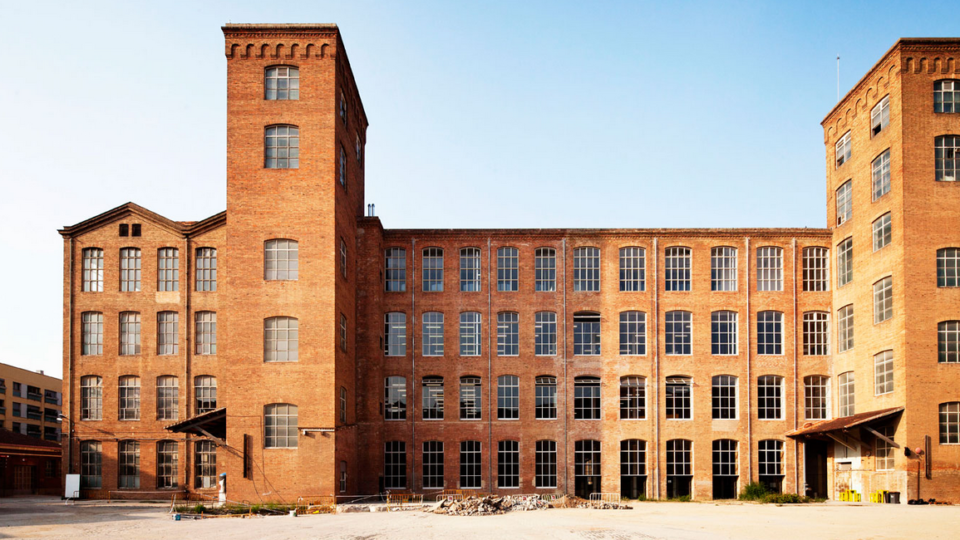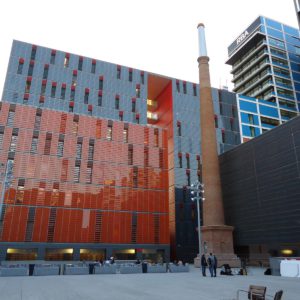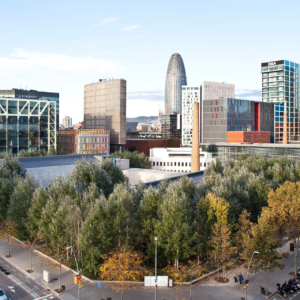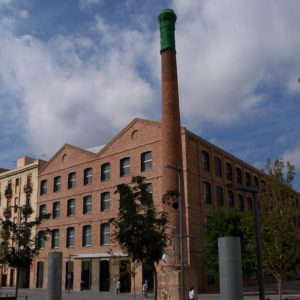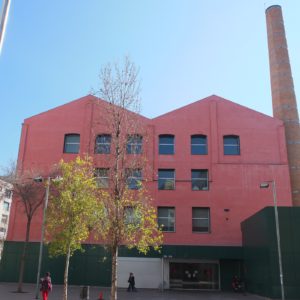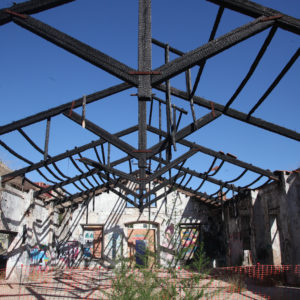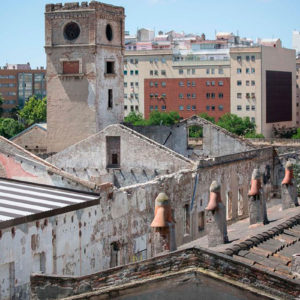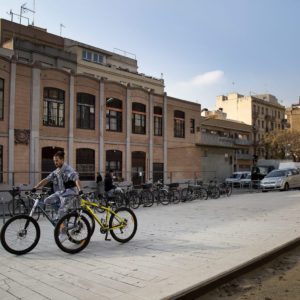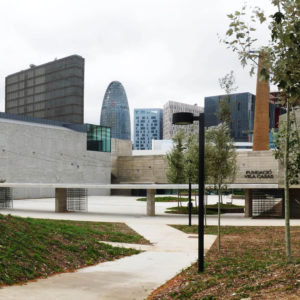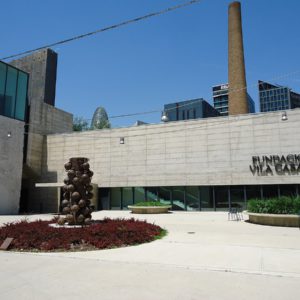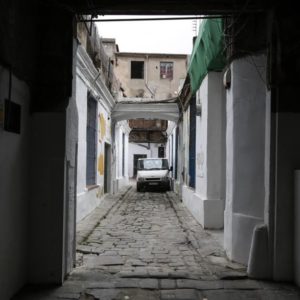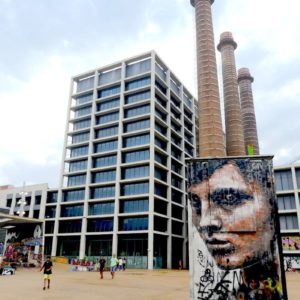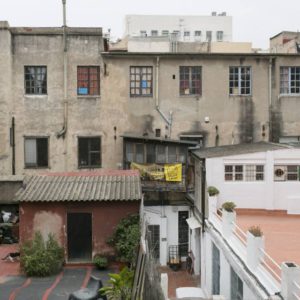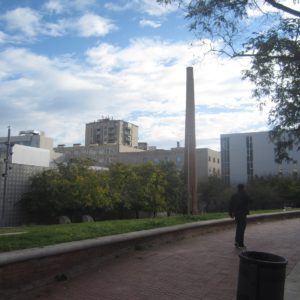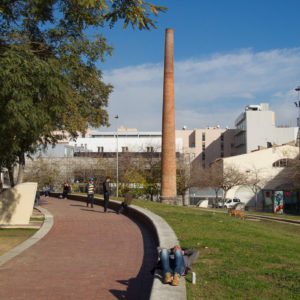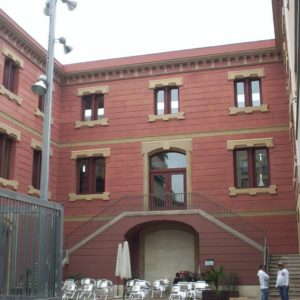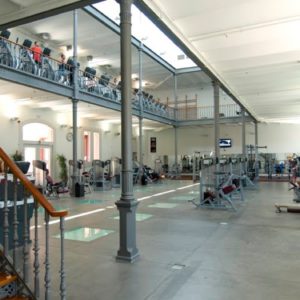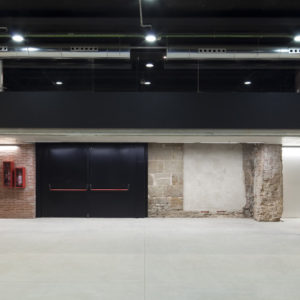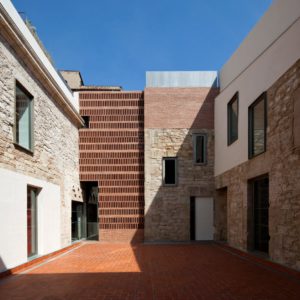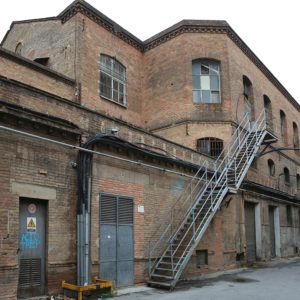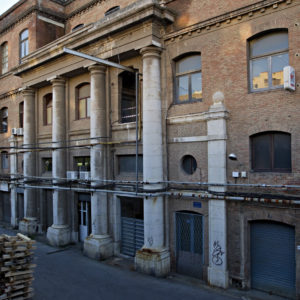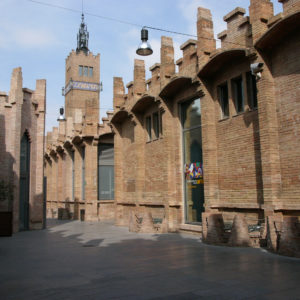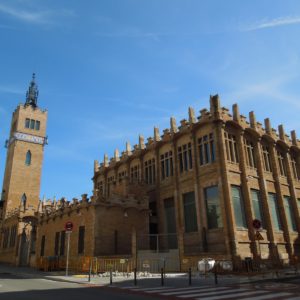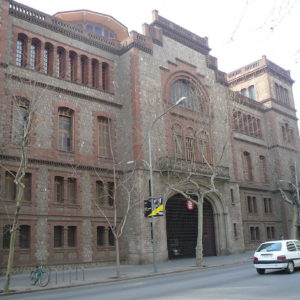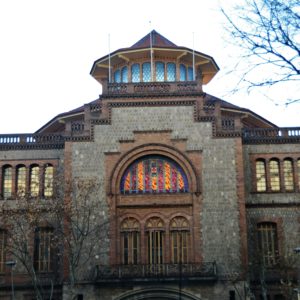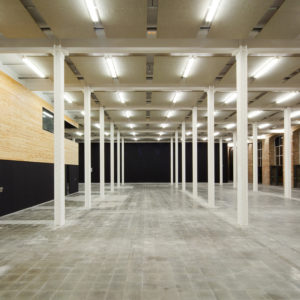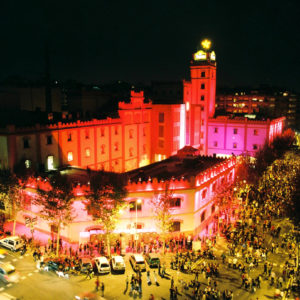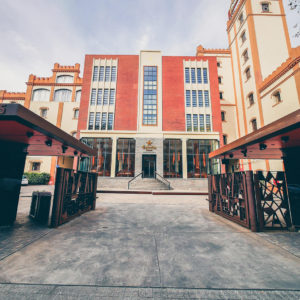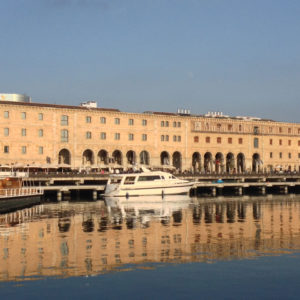The most industrial Barcelona for your audiovisual productions
The industrial heritage of Barcelona is abundant and interesting. The factories that helped the city grow economically were not simple sheds, but constructions designed by prestigious modernist architects such as Josep Puig i Cadafalch.
These buildings, many of which are monuments of local interest, have their own style and even a branch of architecture dedicated to their study. The majority of the industrial buildings in the city of Barcelona are in the districts of Sant Martí, with the epicenter in Poblenou and in Sant-Montjuïc, but there are others scattered throughout Barcelona.
District 22@ in the Poblenou
The district 22@ in Poblenou is now one of the greatest exponents of the industrial reconversion that has experienced the Catalan capital, abandoning the production of material goods to focus on services, communication and technology. In this neighbourhood was located the main industrial concentration of the Iberian Peninsula. We are going to visit some of its most emblematic points.
Tower of les Aigües
The Torre de les Aigües is located in the square of Ramon Calsina. It is a construction of 63 meters high, fully restored, which offers a general view of the 22@ district. It is one of the characteristic towers of the landscape of Poblenou. It is considered as one of the most beautiful in Catalonia.
Can Saladrigas
The large restored chimney in the Carrer del Joncar is the sign that at this point was the textile bleaching and printing factory of Can Saladrigas. The beauty of its installations has led him to be the location for different films. It is located between the streets of Llull, Lope de Vega, Joncar and Marià Aguiló. The main construction is an immense 3-storey building with exposed decorative details on the main facades that contribute to the majesty of the whole. This textile industry now offers place to social and cultural facilities that occupy about 8,000 square meters.
Can Ricart
The industrial site of Can Ricart, the first large steam factory in the neighbourhood, became nowadays a small industrial park for companies and a space for artistic production and research focused on the visual arts. The old factory of Can Ricart is a majestic construction, it currently conserves its main nave, the attached tower and an area in which there is currently a space of artistic creation is located. Can Ricart will be the future park of the Humanities and Social Sciences of the UB.
Can Felipa
Can Felipa, in Calle Pallars, dating from 1855, recalls a block of Parisian houses, with dormers on the top and large stained glass windows on the façade. Nowadays it is a Civic Center that offers a great variety of multidisciplinary activities, it houses the Historical Archive of Poblenou and a theater in the attic.
Can Seixanta
The three buildings located at numbers 18, 20 and 22 of Riereta street house a former textile factory, located in the Raval and dating from 1833. It was abandoned for years until a dozen social and cultural associations rescued it from oblivion thirty years ago. Can Seixanta is a built-up complex composed of several bodies of different heights, which responds to the different periods. In total it is an area of about 5,500 square meters which is an example of the typical industrial constructions that proliferated the Raval since the late 18th century and much of the nineteenth century.
Can Ricart del Raval
The building of the old Ricart Factory was built in 1864 and is located at number 10, Sant Oleguer Street, in the Raval neighbourhood. It is one of the last industrial buildings built in Ciutat Vella and, in the course of its existence, it has had several changes of use: tissue store, school, small workshops, houses … The building contains some architectural elements of interest, which have been preserved. Currently, the building has been rehabilitated as a multi-sports space.
Espai Brossa
It has a curious history that moves away from the predominance of the textile, since it was a factory to mint coins. This coin factory, called La Seca, was operative since the fifteenth century where « florins, duchies, shields, louis and thirteenths » were minted until the mid-nineteenth century. Now it is a space that has, among other services, two rooms of different format for stage performances, an exhibition space, a rehearsal room and a bar that is located both on the ground floor as on the terrace of the building. This new cultural place is part of the Fábricas de Creación network, a program to promote creation and production in the field of Performing and Visual Arts.
Sants-Montjuïc
Sants-Montjuïc is the other district of Barcelona with a great industrial history. The historical nucleus of Sants is an old rural nucleus that developed extraordinarily during the first half of the 20th century when industries and businesses were installed. As industrial zones, the neighbourhoods of La Marina and La Bordeta continue to be the living image of the most working side of the city, with old factories and housing for the middle and working classes.
Can Batlló
Can Batlló, or the old Joan Batlló Factory, is an old industrial complex of 9 hectares, located very close to the Gran Vía de las Cortes Catalanas, near the Plaza Cerdà. The old factory marked the life of the neighbourhood and now it has become a social and cultural center.
Arañó factory
It presents the typical physiognomy of the industrial architecture of its time, with exposed brick facades, iron pillars and wood on the roof. Actual it houses the Club Esportiu Mediterrani, where one can swim in a pool surrounded by u-shaped industrial buildings. It is an industrial building protected as a cultural asset of local interest. The club occupies most of the buildings while the chimney of the factory has remained outside, in the current Plaza de la Olivereta.
Other neighbourhoods
Escola Industrial
The clock building of Can Batlló (1868-1870), a cotton spinning factory in l’Eixample owned by the Batlló brothers, was converted in the 20th century into the Industrial School. It occupies four blocks and was finished by the chief architect of the Mancomunitat, Joan Rubió i Bellver, and is a magnificent example of industrial architecture in exposed brick and stone.
Fabra i Coats
In Sant Andreu we find one of the best known factories in the city. The City Council acquired it about five years ago and decided to devote it to the emerging culture and art. The industrial complex Coats Fabra SA, originally a factory of spinning and weaving of about 15,000 square metres, is now a factory of creation, that is, a centre for the promotion of new artists and performing arts.
Estrella Damm Factory
The old Damm brewery, known as La Bohemia, and today the company’s headquarters was opened in 1905. The site occupies the block between the streets of Rosselló, Còrsega, Cartagena and Dos de Maig. The huge ensemble, which is used occasionally to host concerts, has its own museum with original machinery of the early twentieth century.
Palau de Mar
The building that we know today as Palau de Mar corresponds to the old General Warehouses of Commerce (AGC), the only preserved building of the old industrial port of Barcelona. Located in the neighbourhood of Barceloneta, the building, very characteristic by its walls of exposed brick and the overtures of the windows, is the work of the engineer Mauricio Garrán. Restored as a cultural facility, the Palau de Mar currently houses the Museu d’Història de Catalunya.
If you are thinking about your next production and you need locations like these in Barcelona or any other part of the world, get in touch with us and tell us your needs. We leave you a link to our portfolio and services to inspire you for your next production.
More Information about RVD Media Group.
RVD Media Group is a content creation agency with creative and digital marketing solutions. We bet on great ideas and create strategic moves. We can help you with all types of content, both photographic and audiovisual. Don`t hesitate to contact us.




